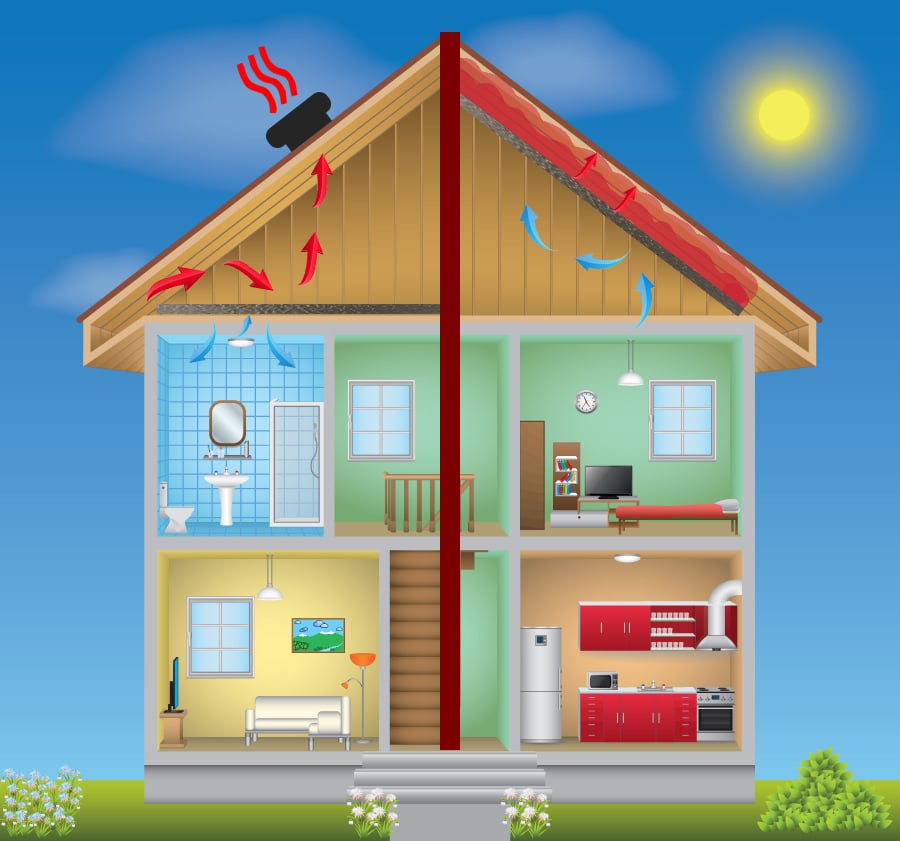Radiant Barrier Controversy
Proper Installation Method – To Tack or Not To Tack?
If you’ve done any research on radiant barrier multi-layer insulation, aka MLI, you might have seen some conflicting information concerning installation techniques. That’s right – in the fast paced, high-stakes world of attic insulation there is serious controversy. Okay, that might’ve been a slight exaggeration, but it is certainly a topic of hot debate in the energy efficiency world.
So, the question is – what is the best way to install radiant barrier in an attic? There are two general ways in which it can be put in. It can either be tacked to the rafters on your attic roof, or it can be laid down on the floor of your attic on top of existing insulation. Let’s talk about some of the specific reasons people advocate for each of these methods.
Those who advocate for tacking it to your roof cite claims that if the blanket is laid on the floor, it is likely to accumulate moisture and eventually will become moldy or ineffective. In fact, if you are using inferior MLI materials, perspiration is a legitimate concern. However, superior radiant barrier products will be multi-layer and perforated to eliminate the danger of water vapor buildup that could lead to mold and eventually, diminished air quality. First-rate MLI is double perforated to ensure that it will be able to quickly dissipate any moisture, eliminating the risk of mold or mildew growth.
There is also argument that if the radiant barrier is tacked to the roof, it will prevent more heat from getting into your attic in the first place. However, warm/cold outdoor air will still make its way into your attic through soffit vents and other openings. With the layer of MLI on the roof, that air will then become trapped in your attic by this reflective barrier.
There are many exterior cracks and crevices that allow outdoor air to enter your attic, but there are also gaps that allow your expensive indoor air to escape into your attic. By placing the radiant barrier on the roof, these air leaks will cause your AC to waste energy heating or cooling the space in your attic. Though if the insulation is placed on the floor, it keeps this leaked AC air from rising into your attic space, and instead reflects it back into your home where it belongs.
Another thing to consider is how your traditional insulation works. It can only absorb so much heat before it becomes saturated. Cover it with a layer of reflective aluminum, and your insulation is far better protected from reaching its saturation point. Quality radiant barrier is covered in two layers of aluminum for double the reflective protection. This way, hot or cold air in your attic is reflected away from your home’s interior. Likewise, your expensive indoor air that escapes through air leaks will be reflected into your home where it belongs.
Probably the most important aspect concerning radiant barrier placement is the fact that if it is installed improperly, it won’t work. If you have smaller rafters that do not allow for a large enough air gap between your roof and the MLI blanket, then it cannot work. The heat from your roof needs to hit a sizeable air gap for the MLI to be able to reflect it back. If there is not enough space, the MLI will simply conduct the heat. Not only that, it will actually cook your shingles and diminish your roof’s longevity. With this fact in mind, the safe bet seems clear. Installing radiant barrier on the attic floor is the superior method of installation.
Installing MLI on the floor will greatly help to keep unruly temperatures in your attic out of your house. Though to make sure the air reflected by the blanket exits your attic as quickly as possible, you will need to make sure you have adequate ventilation. It is recommended that your home have one square foot of ventilation for every 150 square feet of attic floor space. If you rely solely on openings like ridge or soffit vents to circulate fresh air, consider adding a solar fan to your roof. This is a much more proactive, effective approach to keeping unwanted heat or cold out of your attic. Superior insulation coupled with increased ventilation will take pressure off your AC system, allowing it to work less to keep your home at the temperature you want.

Insulation is the ultimate investment for your home, and essentially, you and your family’s comfort. Don’t let inferior companies waste your money, energy and time by installing your products incorrectly. Stay informed and get the most out of your dollar when it comes to home energy improvements!

